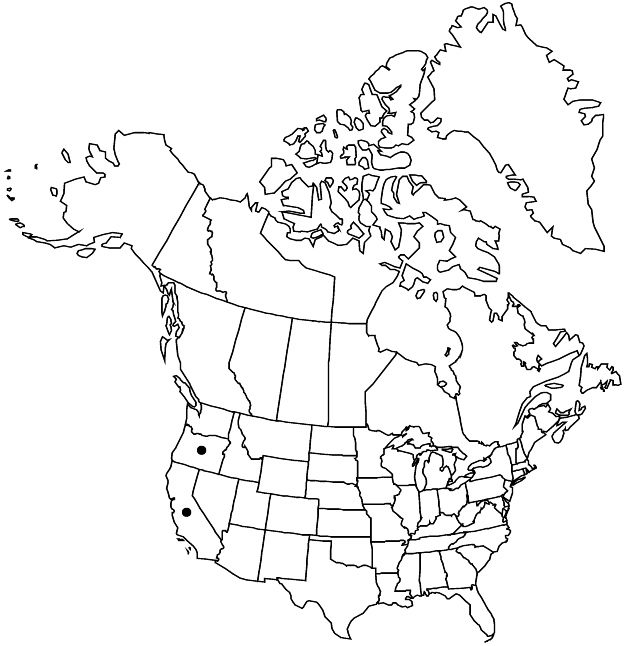Difference between revisions of "Eriogonum roseum"
J. Acad. Nat. Sci. Philadelphia, n. s. 3: 45. 1855.
FNA>Volume Importer |
imported>Volume Importer |
||
| (5 intermediate revisions by one other user not shown) | |||
| Line 12: | Line 12: | ||
|name=Eriogonum vimineum subsp. virgatum | |name=Eriogonum vimineum subsp. virgatum | ||
|authority=(Bentham) S. Stokes | |authority=(Bentham) S. Stokes | ||
| − | }}{{Treatment/ID/Synonym | + | |rank=subspecies |
| + | }} {{Treatment/ID/Synonym | ||
|name=Eriogonum virgatum | |name=Eriogonum virgatum | ||
|authority=Bentham | |authority=Bentham | ||
| + | |rank=species | ||
}} | }} | ||
|hierarchy=Polygonaceae;Polygonaceae subfam. Eriogonoideae;Eriogonum;Eriogonum subg. Oregonium;Eriogonum roseum | |hierarchy=Polygonaceae;Polygonaceae subfam. Eriogonoideae;Eriogonum;Eriogonum subg. Oregonium;Eriogonum roseum | ||
| Line 30: | Line 32: | ||
|elevation=0-2200 m | |elevation=0-2200 m | ||
|distribution=Calif.;Oreg.;Mexico (Baja California). | |distribution=Calif.;Oreg.;Mexico (Baja California). | ||
| − | |discussion=<p>Eriogonum roseum is widespread and typically common; occasionally it will be locally abundant but only rarely can it be considered weedy. It occurs from southwestern Oregon south through much of California to northern Baja California Norte, Mexico. Morphologically this annual species approaches the perennial E. elongatum, and poorly prepared specimens sometimes are difficult to differentiate. A clear distinction between E. roseum and E. gracile appears to be consistently possible in the field, but some herbarium material can be difficult to assign. By and large, E. roseum is more robust and less branched than the decidedly more slender and graceful E. gracile.</p><!-- | + | |discussion=<p><i>Eriogonum roseum</i> is widespread and typically common; occasionally it will be locally abundant but only rarely can it be considered weedy. It occurs from southwestern Oregon south through much of California to northern Baja California Norte, Mexico. Morphologically this annual species approaches the perennial <i>E. elongatum</i>, and poorly prepared specimens sometimes are difficult to differentiate. A clear distinction between <i>E. roseum</i> and <i>E. gracile</i> appears to be consistently possible in the field, but some herbarium material can be difficult to assign. By and large, <i>E. roseum</i> is more robust and less branched than the decidedly more slender and graceful <i>E. gracile</i>.</p><!-- |
| − | --><p>Seeds of Eriogonum roseum were pounded into a powder and either mixed with water and used as a beverage or eaten raw by the Kawaiisu people (M. L. Zigmond 1981).</p> | + | --><p>Seeds of <i>Eriogonum roseum</i> were pounded into a powder and either mixed with water and used as a beverage or eaten raw by the Kawaiisu people (M. L. Zigmond 1981).</p> |
|tables= | |tables= | ||
|references= | |references= | ||
| Line 40: | Line 42: | ||
-->{{#Taxon: | -->{{#Taxon: | ||
name=Eriogonum roseum | name=Eriogonum roseum | ||
| − | |||
|authority=Durand & Hilgard | |authority=Durand & Hilgard | ||
|rank=species | |rank=species | ||
| Line 55: | Line 56: | ||
|publication year=1855 | |publication year=1855 | ||
|special status= | |special status= | ||
| − | |source xml=https:// | + | |source xml=https://bitbucket.org/aafc-mbb/fna-data-curation/src/2e0870ddd59836b60bcf96646a41e87ea5a5943a/coarse_grained_fna_xml/V5/V5_878.xml |
|subfamily=Polygonaceae subfam. Eriogonoideae | |subfamily=Polygonaceae subfam. Eriogonoideae | ||
|genus=Eriogonum | |genus=Eriogonum | ||
Latest revision as of 22:14, 5 November 2020
Herbs, erect, 1–8 dm, thinly tomentose to floccose, whitish to grayish or brownish to reddish brown. Stems: aerial flowering stems erect, 0.5–3 dm, thinly tomentose to floccose. Leaves basal and cauline; basal: petiole 1–4 cm, thinly tomentose to floccose, blade oblanceolate to narrowly oblong, 1–3(–5) × (0.3–)0.5–1(–2) cm, tomentose on both surfaces, sometimes merely floccose and grayish or brownish to reddish brown adaxially; cauline: petiole 0.3–1.5(–2) cm, mostly floccose, blade elliptic, 0.5–3 × 0.3–1 cm, mostly tomentose and whitish to grayish. Inflorescences cymose, often distally uniparous due to suppression of secondary branches, open, 10–70 × 10–45 cm; branches straight or nearly so, infrequently inwardly curved distally, thinly tomentose to floccose; bracts 1–3 × 1–3 mm. Peduncles absent. Involucres appressed to branches, cylindric, (3.5–)4–5 × 2–3 mm; teeth 5, erect, 0.2–0.4 mm. Flowers 1.5–2(–2.5) mm; perianth white to pink or red, occasionally yellow, glabrous; tepals monomorphic, narrowly obovate to oblong; stamens included, 1–1.5 mm; filaments pilose proximally. Achenes brown, 3-gonous, 1.8–2(–2.2) mm. 2n = 18.
Phenology: Flowering May–Nov.
Habitat: Sandy and gravelly flats and slopes, mixed grassland, chaparral, and sagebrush communities, oak and pine woodlands
Elevation: 0-2200 m
Distribution

Calif., Oreg., Mexico (Baja California).
Discussion
Eriogonum roseum is widespread and typically common; occasionally it will be locally abundant but only rarely can it be considered weedy. It occurs from southwestern Oregon south through much of California to northern Baja California Norte, Mexico. Morphologically this annual species approaches the perennial E. elongatum, and poorly prepared specimens sometimes are difficult to differentiate. A clear distinction between E. roseum and E. gracile appears to be consistently possible in the field, but some herbarium material can be difficult to assign. By and large, E. roseum is more robust and less branched than the decidedly more slender and graceful E. gracile.
Seeds of Eriogonum roseum were pounded into a powder and either mixed with water and used as a beverage or eaten raw by the Kawaiisu people (M. L. Zigmond 1981).
Selected References
None.